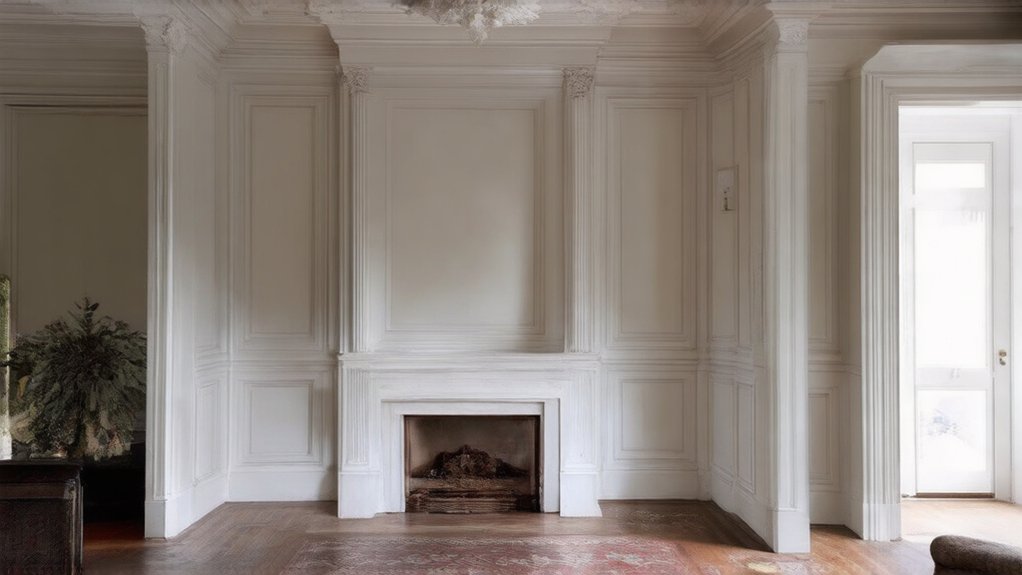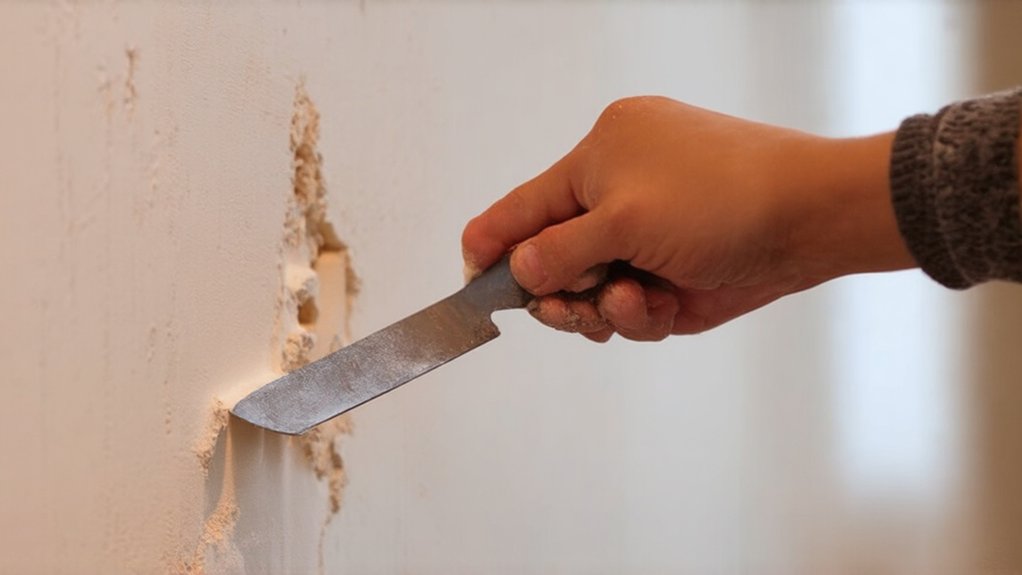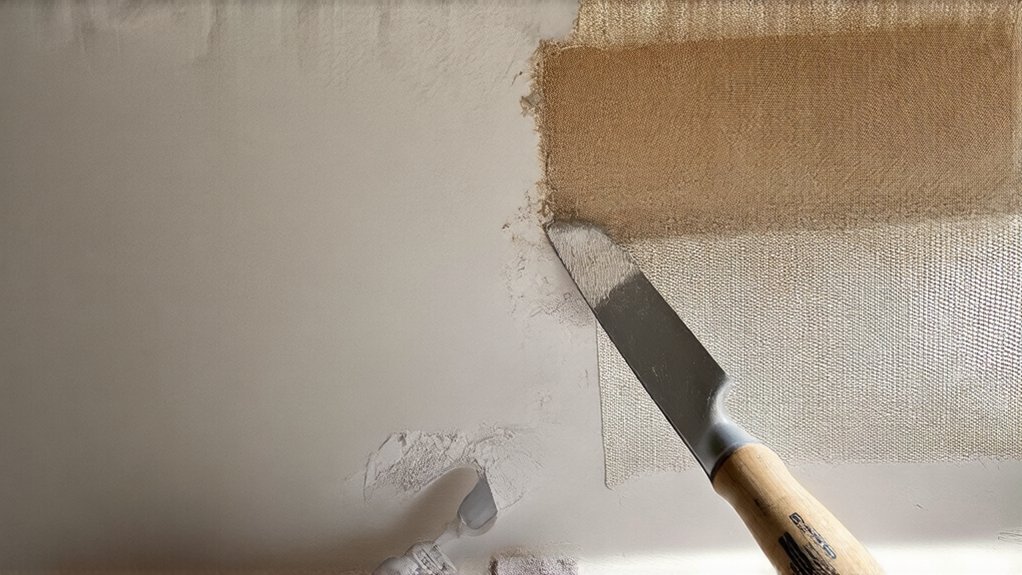When restoring Erie’s historic homes, you’ll want to match plaster and drywall with precision. Start by documenting existing textures and selecting period-appropriate materials that honor the original craftsmanship. Use specialized hand tools, apply lightweight compounds carefully, and focus on seamless blending techniques. Your goal is preserving architectural integrity while ensuring structural soundness. Stick around, and you’ll reveal the secrets to converting your historic walls into a work of art.
Understanding Historic Plaster in Erie’s Older Homes
While Erie’s historic homes stand as structural time capsules, their interior walls tell a rich story of craftsmanship through traditional plaster techniques. Plaster composition and application techniques reflected regional material influences as local artisans blended lime, sand, and horsehair to create durable wall systems that reflected cultural aesthetic variations. If you’re exploring an older Erie home, you’ll notice intricate layering techniques: scratch coats, brown coats, and delicate finish layers that redesigned walls into canvases of architectural heritage. These plaster walls aren’t just surfaces; they’re storytellers, connecting you to generations of skilled builders who carefully constructed each home’s unique character. Modern drywall repair experts in Erie can help preserve these historic wall systems, ensuring that the delicate craftsmanship of earlier generations remains intact and appreciated by contemporary homeowners.
Techniques for Replicating Authentic Plaster Textures
Commanding the art of replicating authentic plaster textures can alter your historic Erie home restoration from a mere repair to a genuine preservation effort. Mastering plaster restoration guidelines requires keen observation and meticulous techniques that honor your home’s original craftsmanship. Drywall installation experts in Erie understand the nuanced approach needed for preserving historic architectural details.
Carefully document existing textures through photographs and tactile analysis. Select period-appropriate materials that match original plaster composition. Apply texture using specialized hand tools and varied pressure techniques. Blend repair areas seamlessly to maintain visual continuity.
Your commitment to authentic plaster repair techniques guarantees your historic Erie home maintains its architectural integrity and timeless character.
Essential Materials and Tools for Seamless Repairs
Every successful historic home restoration in Erie hinges on selecting the right materials and tools for plaster and drywall repairs. You’ll want to command adhesive application methods that guarantee your patches blend seamlessly with original surfaces.
Start by thoroughly cleaning repair areas and using bonding agents like *Bond All Exterior* to secure loose plaster. Invest in quality tools—a drill/driver, utility knife, and putty knives will become your restoration companions.
Proper surface preparation is key: use mesh tape, lightweight compounds, and precision techniques to match historic wall textures. Your attention to detail will conserve Erie’s architectural heritage.
Navigating Challenges in Historic Home Restoration
Restoring historic homes in Erie demands more than just technical skill—it requires a thorough grasp of potential challenges lurking behind aged walls. Your success hinges on strategic project management oversight and meticulous building code compliance.
Anticipate hidden structural surprises that could derail your restoration timeline. Collaborate closely with historic preservation experts to protect architectural integrity. Budget generously for unexpected repairs and material replacements. Document every modification to guarantee regulatory alignment.
Navigating these intricacies means balancing preservation goals with practical restoration needs. By staying flexible and informed, you’ll transform potential obstacles into opportunities for thoughtful, respectful home renewal.
Preservation Strategies for Maintaining Original Wall Aesthetics
When preserving the designer’s soul of historic Erie homes, maintaining original wall aesthetics isn’t just a technical challenge—it’s an art form that requires precision, patience, and deep respect for craftsmanship. You’ll want to prioritize lime-based preservation techniques that honor the home’s original character. Focus on breathable preservation methods that allow walls to naturally respond to environmental changes.
Choose materials that match the historic texture and composition, like traditional horsehair plaster and natural pigments. By carefully selecting compatible compounds, hand-applying textures, and respecting the original craftsmanship, you’ll guarantee your historic walls tell their authentic story while remaining structurally sound and visually stunning.
Step-by-Step Process for Successful Plaster Matching
Preserving Erie’s historic homes demands more than good intentions—it requires a methodical approach to plaster matching that honors craftsman heritage. You’ll need precision, patience, and respect for original techniques when replicating original joinery and blending new with old.
Your step-by-step process involves:
- Conducting thorough initial assessments of existing plaster conditions
- Selecting historically appropriate materials matching original compositions
- Carefully preparing surfaces with specialized restoration tools
- Applying plaster using traditional layering techniques
Meticulous attention guarantees seamless integration, preserving the architectural narrative that makes Erie’s historic homes truly exceptional.
Professional Tips for Drywall and Plaster Restoration
Historic homes in Erie demand specialized knowledge when it comes to drywall and plaster restoration. You’ll want to prioritize moisture management and maintain structural integrity throughout your project. Start by carefully evaluating existing surfaces, removing damaged areas, and selecting materials that match the home’s original character.
Protect your restoration by addressing potential water damage early, using professional-grade sealants and moisture barriers. Employ skilled techniques like embedding mesh patches, applying multiple compound layers, and feathering edges to create seamless repairs.
Frequently Asked Questions
How Much Does Professional Plaster Restoration Cost in an Erie Historic Home?
You’ll likely spend $500-$1,900 for professional plaster restoration in an Erie historic home, depending on damage complexity. Costs vary by project size, with specialized techniques potentially increasing your total investment for authentic preservation.
Can DIY Homeowners Successfully Match Original Plaster Textures Without Professional Training?
You can match plaster textures DIY, but it’s challenging. With patience, plaster repair techniques education, and practice, you’ll improve. Start small, watch tutorials, and don’t get discouraged—your skills will grow with each attempt.
What Are the Risks of Removing Versus Preserving Historic Plaster Walls?
You’ll risk compromising your home’s structural integrity and historical significance by removing original plaster. Preservation protects your property’s value, maintains authentic craftsmanship, and avoids costly, irreversible damage to your historic home’s unique character.
How Long Do Plaster Repair Techniques Typically Last in Older Erie Homes?
You’ll find plaster repairs in Erie homes can last 20-50 years when you’re proactive about aging plaster durability, use authentic materials, and focus on plaster damage prevention through consistent maintenance and professional restoration techniques.
Will Modern Plaster Repairs Impact My Home’s Historic Preservation Status?
Yes, modern plaster repairs could impact your home’s historic status. You’ll want to prioritize structural integrity and aesthetic considerations by using period-appropriate lime plasters that match the original craftsmanship and maintain your home’s authentic character.
Conclusion
Restoring Erie’s historic homes isn’t just about repairs—it’s about preserving architectural heritage. You’ll find that matching plaster and drywall requires patience, skill, and respect for original craftsmanship. By understanding traditional techniques and using the right materials, you can breathe new life into your historic space while maintaining its authentic character. Your home’s walls will tell a story that honors Erie’s rich architectural legacy.



